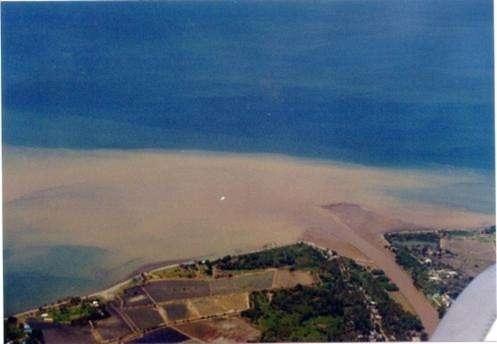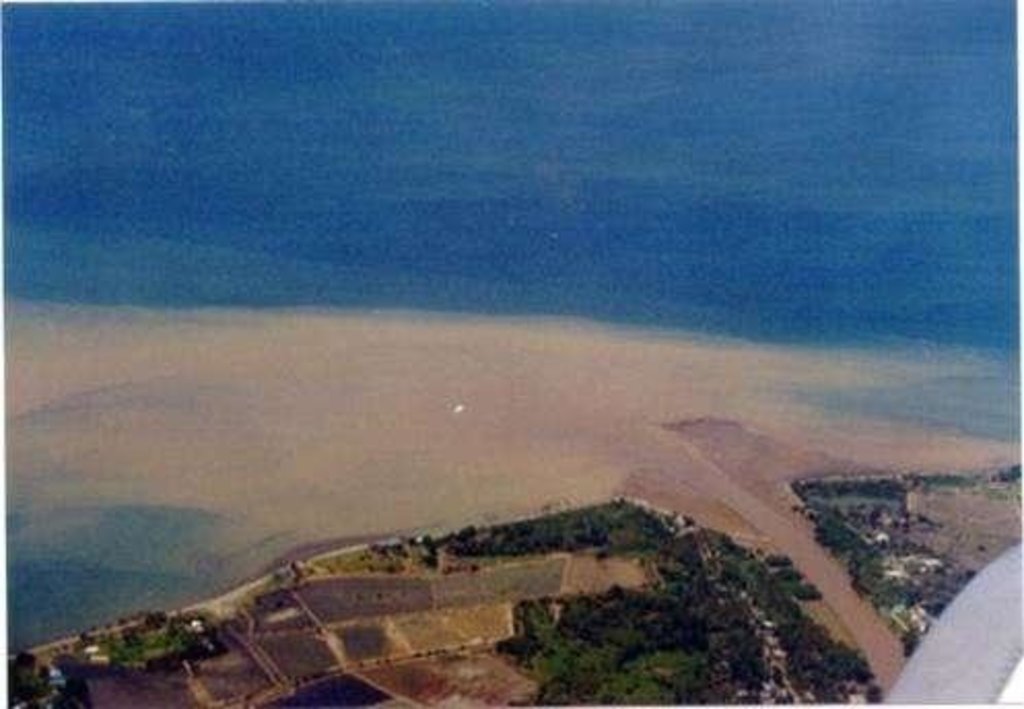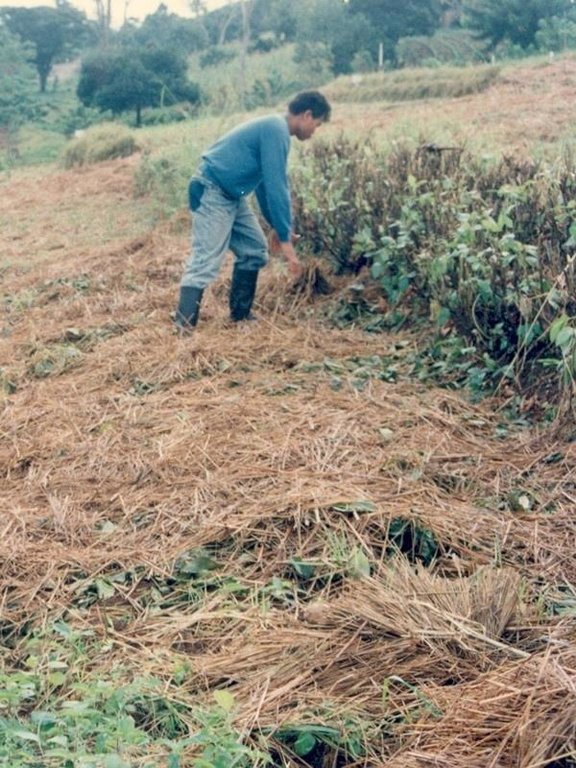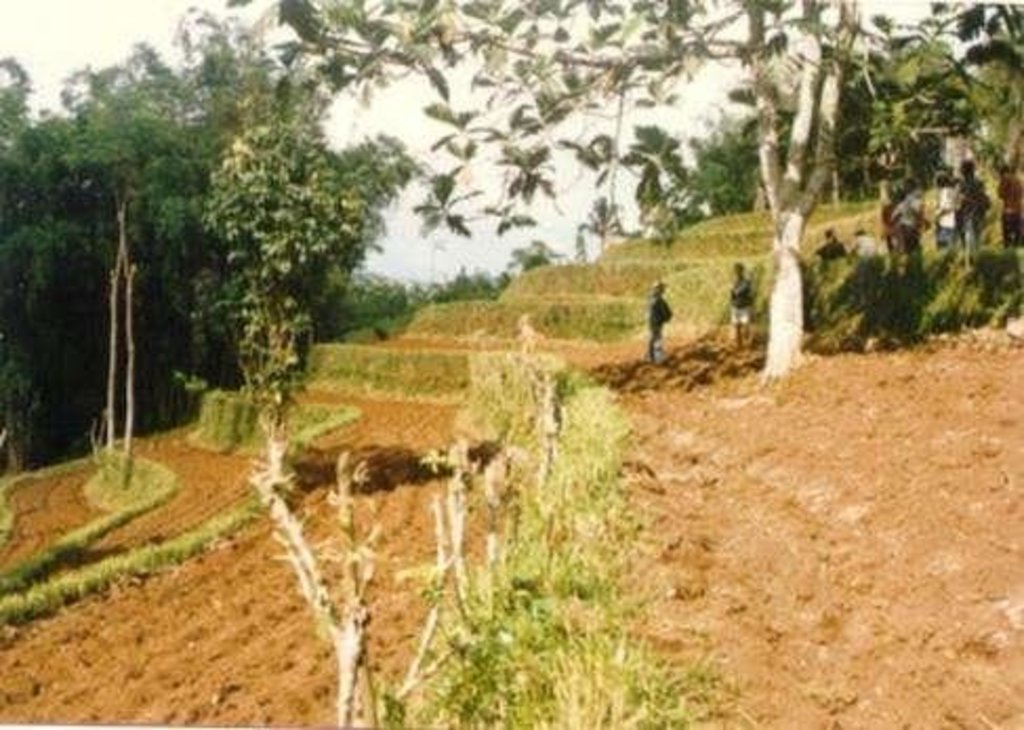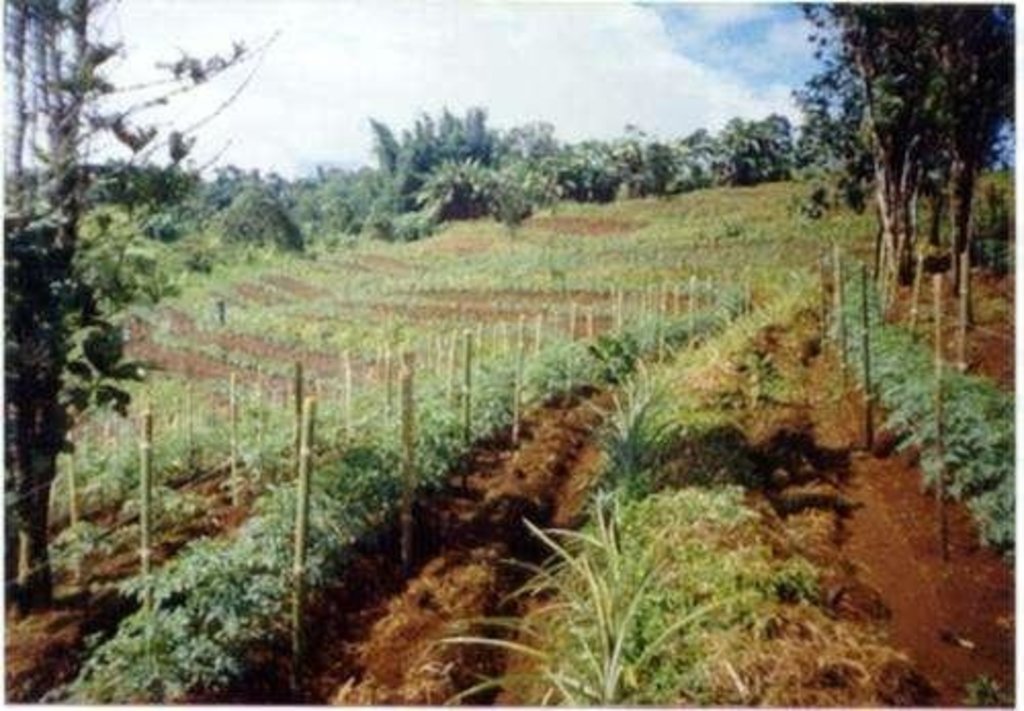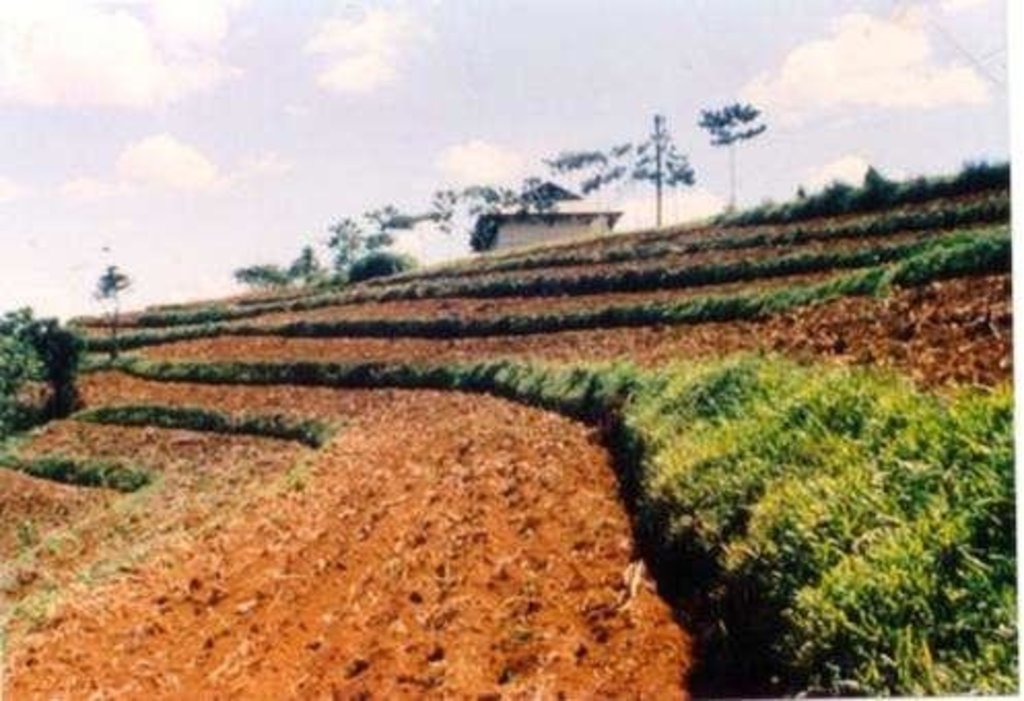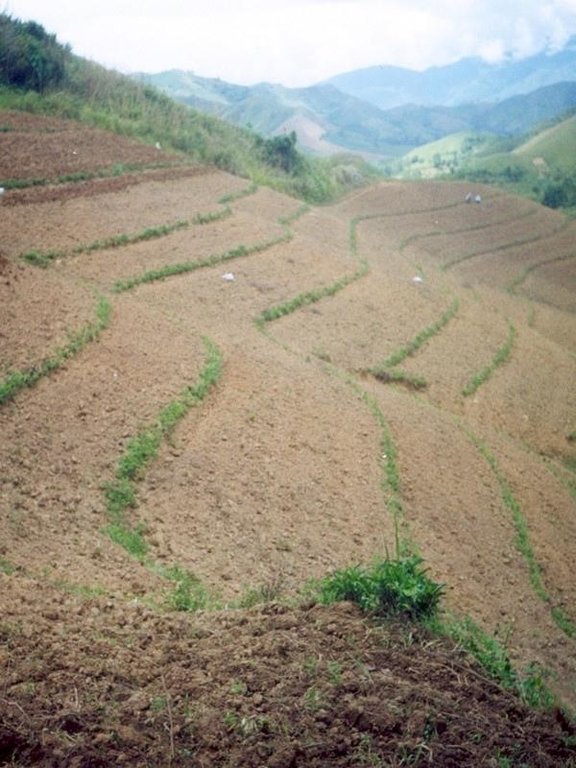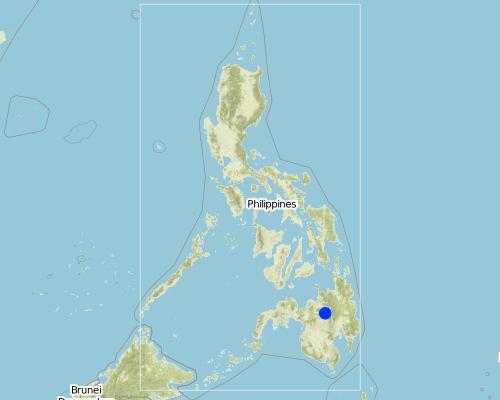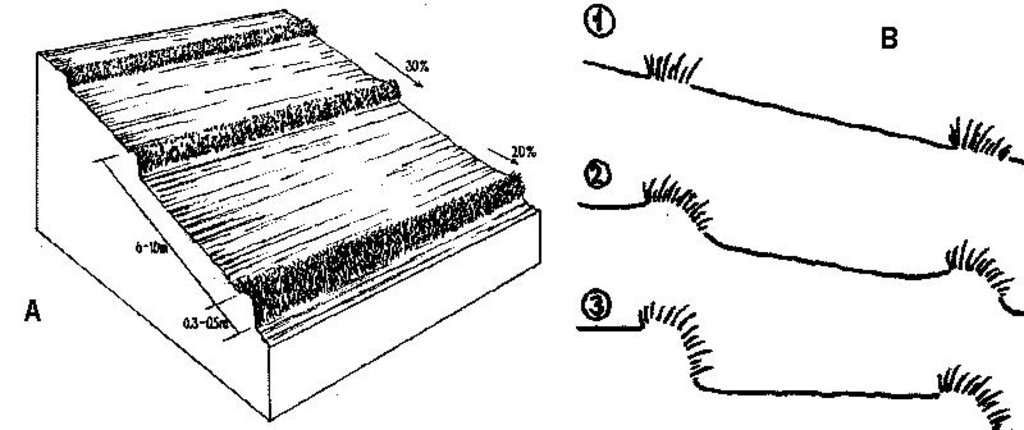Natural Vegetative Strips (NVS) [Filipinas]
- Criação:
- Atualização:
- Compilador/a: Philippine Overview of Conservation Approaches and Technologies
- Editor: –
- Revisor: Mathias Gurtner
technologies_1133 - Filipinas
Veja as seções
Expandir tudo Recolher tudo1. Informação geral
1.2 Detalhes do contato das pessoas capacitadas e instituições envolvidas na avaliação e documentação da tecnologia
Pessoa(s) capacitada(s)
Especialista em GST:
MERCADO Agustin
a.mercado@cgiar.org / agustin9146@yahoo.com
International Center for Research in Agroforestry ICRAF
ICRAF, P.O. Box 161, Bogor
Indonésia
Especialista em GST:
Rondal José
joserondal@yahoo.com
Bureau of Soils and Water Management
Bureau of Soils and Water Management SRDC Bldg. Visayas Avenue corner Elliptical Road, Diliman, Quezon City 1101 Metro Manila
Filipinas
Especialista em GST:
Garrity Dennis
International Center for Research in Agroforestry ICRAF
ICRAF, P.O. Box 161, Bogor
Indonésia
Nome da(s) instituição(ões) que facilitou(ram) a documentação/ avaliação da Tecnologia (se relevante)
Bureau of Soils and Water Management (Bureau of Soils and Water Management) - FilipinasNome da(s) instituição(ões) que facilitou(ram) a documentação/ avaliação da Tecnologia (se relevante)
International Centre for Research in Agroforestry (ICRAF) - Quênia1.3 Condições em relação ao uso da informação documentada através de WOCAT
Quando os dados foram compilados (no campo)?
26/06/1999
O/a compilador/a e a(s) pessoa(s) capacitada(s) aceitam as condições relativas ao uso de dados documentados através da WOCAT:
Sim
1.4 Declaração de sustentabilidade da tecnologia descrita
A tecnologia descrita aqui é problemática em relação a degradação da terra de forma que não pode ser declarada uma tecnologia de gestão sustentável de terra?
Não
1.5 Referência ao(s) questionário(s) sobre as abordagens da GST

LANDCARE - Claveria Landcare Association (CLCA) [Filipinas]
Associations that help diffuse, at low cost, soil and water conservation technologies among upland farmers to generate income while conserving natural resources.
- Compilador/a: Romeo Villamin Labios
2. Descrição da tecnologia de GST
2.1 Descrição curta da tecnologia
Definição da tecnologia:
Within individual cropland plots, strips of land are marked out on the contour and left unploughed in order to form permanent, cross-slope barriers of naturally established grasses and herbs.
2.2 Descrição detalhada da tecnologia
Descrição:
Natural vegetative strips (NVS) are narrow live barriers comprising naturally occurring grasses and herbs. Contour lines are laid out with an A-frame or through the ‘cow's back method’ (a cow is used to walk across the slope: it tends to follow the contour and this is confirmed when its back is seen to be level). The contours are then pegged to serve as an initial guide to ploughing. The 0.3-0.5 m wide strips are left unploughed to allow vegetation to establish. Runoff flowing down the slope during intense rain is slowed, and infiltrates when it reaches the vegetative strips. Eroded soil collects on and above the strips and natural terraces form over time. This levelling is assisted by ploughing along the contour between the NVS - through ‘tillage erosion’ - which also moves soil downslope.
The vegetation on the established NVS needs to be cut back to a height of 5-10 cm: once before planting a crop, and once or twice during the cropping period. The cut material can be incorporated during land preparation, applied to the cropping area as mulch, or used as fodder. This depends on whether the farmer has livestock or not, on personal preference, and on the time of cutting. If the grass is applied as mulch or incorporated, the technology can be considered to be an agronomic, as well as a vegetative, measure.
NVS constitutes a low-cost technique because no planting material is required and only minimal labour is necessary for establishment and maintenance. Some farmers had already practiced the technology for several years before the intervention of the ICRAF (The World Agroforestry Centre) in 1993. ICRAF came to realise that farmers here preferred NVS to the recommended ‘contour barrier hedgerows’ of multipurpose trees- which land users viewed as being too labour intensive. When farmers became organised into ‘Landcare’ groups, NVS began to gain wide acceptance.
Land users appreciate the technique because it effectively controls soil erosion and prevents loss (through surface runoff) of fertilizers applied to the crop. As an option, some farmers plant fruit and timber trees, bananas or pineapples on or above the NVS. This may be during establishment of the contour lines, or later. The trees and other cash perennials provide an additional source of income, at the cost of some shading of the adjacent annual crops.
2.3 Fotos da tecnologia
2.5 País/região/locais onde a tecnologia foi aplicada e que estão cobertos nesta avaliação
País:
Filipinas
Região/Estado/Província:
Misamis Oriental
Especificação adicional de localização:
Bukidnon
Comentários:
The technology has been practiced by a few farmers for the past several years. With the entry of the International Centre for Research in Agroforestry (ICRAF) in 1993; farmers became organized and the technology gained wide adherence.
Map
×2.6 Data da implementação
Indique o ano de implementação:
1993
Caso o ano exato seja desconhecido, indique a data aproximada:
- menos de 10 anos atrás (recentemente)
2.7 Introdução da tecnologia
Especifique como a tecnologia foi introduzida:
- através de projetos/intervenções externas
Comentários (tipos de projeto, etc.):
It evolved in the area with some adaptations.
3. Classificação da tecnologia de GST
3.1 Principal/principais finalidade(s) da tecnologia
- Reduz, previne, recupera a degradação do solo
3.2 Tipo(s) atualizado(s) de uso da terra onde a tecnologia foi aplicada

Terra de cultivo
- Cultura anual
- Cultura de árvores e arbustos
Principais plantações (colheitas para venda e consumo próprio):
Maize, vegetables; coffee; fruit trees; upland rice
Comentários:
Major land use problems (compiler’s opinion): Loss of topsoil through sheet erosion and rills, leading to rapid soil fertility decline. In turn soil fertility decline results in the need for increasing levels of fertilizer inputs to maintain crop yield. However, these fertilizers are often washed away by surface runoff - a vicious circle.
Major land use problems (land users’ perception): Soil productivity decline; need more inputs to maintain crop yield.
3.3 Mais informações sobre o uso da terra
Abastecimento de água para a terra na qual a tecnologia é aplicada:
- Precipitação natural
Número de estações de cultivo por ano:
- 2
Especifique:
Longest growing period: 240 days (Mar - Dec)
3.4 Grupo de GST ao qual pertence a tecnologia
- Medidas de curva de nível
3.5 Difusão da tecnologia
Especifique a difusão da tecnologia:
- Uniformemente difundida numa área
Caso a tecnologia seja uniformemente difundida numa área, indique a área coberta aproximada:
- 100-1.000 km2
Comentários:
Total area covered by the SLM Technology is 110 m2. The technology has been practiced by a few farmers for the past several years. With the entry of the International Centre for Research in Agroforestry (ICRAF) in 1993; farmers became organized and the technology gained wide adherence.
3.6 Medidas de GST contendo a tecnologia

Medidas agronômicas
- A1: cobertura vegetal/do solo
- A2: Matéria orgânica/fertilidade do solo
- A3: Tratamento da superfície do solo

Medidas vegetativas
- V2: gramíneas e plantas herbáceas perenes
Comentários:
Type of agronomic measures: mixed cropping / intercropping, mulching, legume inter-planting, manure / compost / residues, contour tillage
Type of vegetative measures: aligned: -contour
3.7 Principais tipos de degradação da terra abordados pela tecnologia

Erosão do solo pela água
- Wt: Perda do solo superficial/erosão de superfície
- Wg: Erosão por ravinas/ravinamento

Deteriorização química do solo
- Cn: declínio de fertilidade e teor reduzido de matéria orgânica (não causado pela erosão)
Comentários:
Main causes of degradation: deforestation / removal of natural vegetation (incl. forest fires) (caused massive erosion and loss of productivity), Lack of enforcement of legislat./authority (no clear cut policy and support from LGU). Secondary causes of degradation: overgrazing (over population of livestock, low land ratio), education, access to knowledge and support services (farmers are not fully aware of simple SWC approach), Agricultural causes (unsustainable practice in farming)
3.8 Redução, prevenção ou recuperação da degradação do solo
Especifique o objetivo da tecnologia em relação a degradação da terra:
- Reduzir a degradação do solo
Comentários:
Secondary goals: prevention of land degradation, rehabilitation / reclamation of denuded land
4. Especificações técnicas, implementação de atividades, entradas e custos
4.1 Desenho técnico da tecnologia
4.2 Especificações técnicas/ explicações do desenho técnico
A - Spacing of natural vegetative strips depends on the slope.
B - The insert shows the evolution of terraces over time through tillage and soil erosion, leading to accumulation of sediment behind the strips (steps 1-3).
Technical knowledge required for field staff / advisors: moderate. Technical knowledge required for land users: moderate.
Main technical functions: reduction of slope angle, reduction of slope length, control of dispersed runoff. Secondary technical functions: improvement of ground cover, increase of infiltration, increase in soil fertility
Agronomic measures:
Mixed cropping / intercropping - Material/ species: annuals/perennials; Remarks: laid out alternately.
Mulching - Material/ species: crop residues; spread on the surface
Legume inter-planting - purpose: for nitrogen fixation
Manure / compost / residues - Material/ species: animal, crop residues
Contour tillage - Material/ species: Contour strips are laid into 6-10 meters apart depending on slope gradient.
Vegetative measures:
Aligned, along contour
Vegetative material: T : trees / shrubs, F : fruit trees / shrubs, C : perennial crops, G : grass, O : other
Vertical interval between rows / strips / blocks (m): 1
Spacing between rows / strips / blocks (m): 5
Vertical interval within rows / strips / blocks (m): 8
Width within rows / strips / blocks (m): 0.5
Narrow grass barriers
Vegetative material: grass
Number of plants per (ha): dense grass
Width within rows / strips / blocks (m): 0.5-0.7
Trees/ shrubs species: Acacia mangium, Eucalyptus deglupta, Gmelina arbarea
Fruit trees / shrubs species: Mango, Durian, Rambutan, Jackfruit
Perennial crops species: Coffee, rubber, pineappe
Grass species: Bamboo, setara, napier, Panicum spp.
Other species: Legumes
Slope (which determines the spacing indicated above): 30%
If the original slope has changed as a result of the Technology, the slope today is (see figure below): 2%
Gradient along the rows / strips: 20%
4.3 Informação geral em relação ao cálculo de entradas e custos
Especifique como custos e entradas foram calculados:
- por área de tecnologia
Indique o tamanho e a unidade de área:
1 ha
Especifique a moeda utilizada para os cálculos de custo:
- Dólares norte-americanos
4.4 Atividades de implantação
| Atividade | Tipo de medida | Periodicidade | |
|---|---|---|---|
| 1. | Layout of contours with the use of an A-frame (or cow’s back method, see Annexe T3)) placing wooden pegs along the contours. | Vegetativo | dry season/before land preparation |
| 2. | Seeding (T, F, C) | Vegetativo | dry season |
| 3. | Transplanting | Vegetativo | onset of rainy season |
| 4. | Land preparation | Vegetativo | dry season/before planting |
4.5 Custos e entradas necessárias para a implantação
| Especifique a entrada | Unidade | Quantidade | Custos por unidade | Custos totais por entrada | % dos custos arcados pelos usuários da terra | |
|---|---|---|---|---|---|---|
| Mão-de-obra | labour | 1,0 | 15,0 | 15,0 | 100,0 | |
| Equipamento | animal traction | 1,0 | 40,0 | 40,0 | 100,0 | |
| Equipamento | tools | 1,0 | 25,0 | 25,0 | 100,0 | |
| Equipamento | stakes (pegs) | 1,0 | 4,0 | 4,0 | 100,0 | |
| Custos totais para a implantação da tecnologia | 84,0 | |||||
Comentários:
Duration of establishment phase: 12 month(s)
4.6 Atividades recorrentes/manutenção
| Atividade | Tipo de medida | Periodicidade/frequência | |
|---|---|---|---|
| 1. | Initial ploughing along the contour: leaving unploughed strips. | Agronômico | onset of rainy season / before each season |
| 2. | Planting | Agronômico | onset of rainy season / each cropping season |
| 3. | Mulching | Agronômico | dry season / only whensufficient crop residues |
| 4. | Fertilization | Agronômico | early vegetative stage / each cropping season |
| 5. | Interim cultivation/weeding | Agronômico | vegetative stage / each cropping season |
| 6. | Ploughing mulch into the soil during normal land cultivation. | Agronômico | |
| 7. | Weeding (T, F, C), Slashing grass | Vegetativo | rainy season /2 times |
| 8. | Spreading the cut materials evenly in the alleys (between strips) as | Vegetativo | rainy season /2 times (weeded materials) |
| 9. | Pruning | Vegetativo | before and during cropping /2 times per cropping |
4.7 Custos e entradas necessárias pata a manutenção/atividades recorrentes (por ano)
| Especifique a entrada | Unidade | Quantidade | Custos por unidade | Custos totais por entrada | % dos custos arcados pelos usuários da terra | |
|---|---|---|---|---|---|---|
| Mão-de-obra | labour | 1,0 | 36,0 | 36,0 | 100,0 | |
| Equipamento | animal traction | 1,0 | 40,0 | 40,0 | 100,0 | |
| Equipamento | tools | 1,0 | 2,0 | 2,0 | 100,0 | |
| Custos totais para a manutenção da tecnologia | 78,0 | |||||
Comentários:
Machinery/ tools: plough, harrow
Costs of establishing contours and maintenance by slashing are calculated by total length of NVS. This example is from a typical field with an 18% slope: at an NVS spacing of 5 m, the approximate total linear distance for one hectare is 2,000 m. In this example, the farmer has paid for everything him/herself (see section on acceptance/adoption). Note that the establishment cost is more or less equivalent to the cost of standard land preparation by ploughing. When 'enrichment planting’ of the strips is carried out, extra cost for seedlings (of fruit trees for example) and associated labour for planting are incurred.
4.8 Fatores mais importantes que afetam os custos
Descreva os fatores mais determinantes que afetam os custos:
Slope is the dominant factor in cost calculation. The steeper the slope, the more difficult the mobility is and the more closely-spaced the contours are .
5. Ambiente natural e humano
5.1 Clima
Precipitação pluviométrica anual
- <250 mm
- 251-500 mm
- 501-750 mm
- 751-1.000 mm
- 1.001-1.500 mm
- 1.501-2.000 mm
- 2.001-3.000 mm
- 3.001-4.000 mm
- > 4.000 mm
Especificações/comentários sobre a pluviosidade:
Rainfall is more or less evenly distributed throughout the year.
Zona agroclimática
- úmido
- Subúmido
Thermal climate class: tropics
5.2 Topografia
Declividade média:
- Plano (0-2%)
- Suave ondulado (3-5%)
- Ondulado (6-10%)
- Moderadamente ondulado (11-15%)
- Forte ondulado (16-30%)
- Montanhoso (31-60%)
- Escarpado (>60%)
Formas de relevo:
- Planalto/planície
- Cumes
- Encosta de serra
- Encosta de morro
- Sopés
- Fundos de vale
Zona de altitude:
- 0-100 m s.n.m.
- 101-500 m s.n.m.
- 501-1.000 m s.n.m.
- 1.001-1.500 m s.n.m.
- 1.501-2.000 m s.n.m.
- 2.001-2.500 m s.n.m.
- 2.501-3.000 m s.n.m.
- 3.001-4.000 m s.n.m.
- > 4.000 m s.n.m.
5.3 Solos
Profundidade do solo em média:
- Muito raso (0-20 cm)
- Raso (21-50 cm)
- Moderadamente profundo (51-80 cm)
- Profundo (81-120 cm)
- Muito profundo (>120 cm)
Textura do solo (solo superficial):
- Médio (limoso, siltoso)
- Fino/pesado (argila)
Matéria orgânica do solo superficial:
- Médio (1-3%)
- Baixo (<1%)
Caso disponível anexe a descrição completa do solo ou especifique as informações disponíveis, p. ex. tipo de solo, PH/acidez do solo, nitrogênio, capacidade de troca catiônica, salinidade, etc.
Soils are developed from fine-grained igeneous rocks. Soil fertility: strongly acid and with high P fixing capacity. Rapid organic matter mineralisation due to high temperature. Soil drainage is generally good except in isolated depressions.
5.6 Características dos usuários da terra que utilizam a tecnologia
Orientação de mercado do sistema de produção:
- Subsistência (autoabastecimento)
- Misto (subsistência/comercial)
Rendimento não agrícola:
- 10-50% de toda renda
Nível relativo de riqueza:
- Média
- Rico
Nível de mecanização:
- Tração animal
- Mecanizado/motorizado
Indique outras características relevantes dos usuários da terra:
Population density: 50-100 persons/km2; Annual population growth: > 4%
and own 20% of the land (5).
and own 40% of the land (30).
and own 30% of the land (65).
Off-farm income specification: Carpentry, trade, business, labour for neighbouring farms and other labour intensive agricultural activities (e.g. vegetable production)
Market orientation of production system: Upland rice is grown as subsistence. Maize is sold to feed millers.
Level of mechanization: The terrain limits the extensive use of machineries.
5.7 Média da área de terra própria ou arrendada por usuários da terra que utilizam a tecnologia
- < 0,5 ha
- 0,5-1 ha
- 1-2 ha
- 2-5 ha
- 5-15 ha
- 15-50 ha
- 50-100 ha
- 100-500 ha
- 500-1.000 ha
- 1.000-10.000 ha
- > 10.000 ha
Comentários:
Subdivision of inheritance lands. High population growth rate attributed to natural birth and envigoration of lowland population create pressure to farm site.
5.8 Propriedade de terra, direitos de uso da terra e de uso da água
Propriedade da terra:
- Indivíduo, não intitulado
- Indivíduo, intitulado
Direitos do uso da terra:
- Arrendado
- Indivíduo
6. Impactos e declarações finais
6.1 Impactos no local mostrados pela tecnologia
Impactos socioeconômicos
Produção
Produção agrícola
Comentários/especificar:
area competition
Produção de forragens
Comentários/especificar:
biomass as fertilizer (or biomass as mulch)
Qualidade da forragem
Comentários/especificar:
biomass as fertilizer (or biomass as mulch)
Área de produção
Comentários/especificar:
crop area loss, before NVS evolved to cash perennials or fodder grasses
Gestão de terra
Renda e custos
Despesas com insumos agrícolas
Comentários/especificar:
during establishment
Rendimento agrícola
Comentários/especificar:
biomass was given value
Disparidades econômicas
Carga de trabalho
Comentários/especificar:
regular pruning
Outros impactos socioeconômicos
very low inputs required
Impactos socioculturais
Instituições comunitárias
Instituições nacionais
Comentários/especificar:
government line agencies and educational institutions
Atenuação de conflitos
Comentários/especificar:
negligible socio-cultural conflicts
Impactos ecológicos
Ciclo hídrico/escoamento
Escoamento superficial
Quantidade anterior à GST:
45
Quantidade posterior à GST:
8
Drenagem de excesso de água
Comentários/especificar:
partly increased water-logging (negligible)
Solo
Umidade do solo
Cobertura do solo
Perda de solo
Quantidade anterior à GST:
40
Quantidade posterior à GST:
2
Comentários/especificar:
important for sustainability
Biodiversidade: vegetação, animais
Diversidade vegetal
Controle de praga/doença
Comentários/especificar:
pest sanctuary
Clima e redução de riscos de desastre
Velocidade do vento
Outros impactos ecológicos
soil structure
soil fertility
weed infestation due to seed dispersion and grass roots
Comentários/especificar:
spreading from the NVS to nearby areas (especially with cogon grass: Imperata cylindrica)
6.2 Impactos externos mostrados pela tecnologia
Caudal confiável e estável em período seco
Cheias de jusante
Comentários/especificar:
no actual measurement
Sedimentação a jusante
Poluição de água subterrânea/rio
6.4 Análise do custo-benefício
Como os benefícios se comparam aos custos de implantação (do ponto de vista dos usuários da terra)?
Retornos a curto prazo:
positivo
Retornos a longo prazo:
muito positivo
Como os benefícios se comparam aos custos recorrentes/de manutenção(do ponto de vista dos usuários da terra)?
Retornos a curto prazo:
positivo
Retornos a longo prazo:
muito positivo
6.5 Adoção da tecnologia
Entre todos aqueles que adotaram a tecnologia, quantos adotaram espontaneamente, ou seja, sem receber nenhum incentivo material/pagamentos?
- 50-90%
Comentários:
50% of land user families have adopted the Technology with external material support (2000 families)
50% of land user families have adopted the Technology spontaneously (without external material support) (2000 families)
There is a strong trend towards spontaneous adoption of the Technology. Factor that helped was the formation of Landcare associations which have benefited their members in various ways. There is a strong trend towards spontaneous adoption, especially where Landcare associations are in operation.
6.7 Pontos fortes/vantagens/oportunidades da tecnologia
| Pontos fortes/vantagens/oportunidades na visão do usuário da terra |
|---|
| Easy to establish and maintain |
| Improve soil fertility |
| Prevent soil erosion |
| Pontos fortes/vantagens/oportunidades na visão do/a compilador/a ou de outra pessoa capacitada |
|---|
| Easy to establish and maintain (How to sustain: Transform farmers associations into cooperative which serve as conduits in marketing. Intensify information and education campaign.) |
| Less competition for space, sunlight, moisture and nutrient. (How to sustain: Ensure continued regular trimming of vegetative strips and use of these as fodder or mulch.) |
| Low labor and external inputs requirement |
|
Effective in reducing soil erosion (by 90%) (How to sustain: Adopt other supportive technologies like mulching, zero tillage/minimum tillage, etc.) |
6.8 Pontos fracos, desvantagens/riscos da tecnologia e formas de superá-los
| Pontos fracos/desvantagens/riscos na visão do usuário da terra | Como eles podem ser superados? |
|---|---|
| High initial establishment cost | Subsidy/assistance from government |
| Effect of technology is not readily seen | Education about what long term sustainability means |
| High gestation period for some component of the system | Proper mix of annual and perennial crops |
| Pontos fracos/vantagens/riscos na visão do/a compilador/a ou de outra pessoa capacitada | Como eles podem ser superados? |
|---|---|
|
Effect on yield and income is not readily felt, since reduced erosion is not easily translated into increased income or yield |
Farmers should have supplementary sources of income (eg livestock). Education about what long-term sustainability means. |
| Reduction of productive area by approx 10% |
Optimum fertilization to offset production loss. Nutrients are conserved under NVS and this will result in the reduction of fertilizer requirement after some years. |
|
Creation of a fertility gradient within the alley (soil is lost from the top of the alley and accumulates above the NVS where fertility then concentrates) |
Increased application of fertilizer on the upper part of alley. |
| Overall increase of production value is low | Land users could ask for subsidy/assistance from Government: eg for fertilizers, establishment of nurseries, free seedlings (for higher value fruit trees). |
7. Referências e links
7.2 Referências às publicações disponíveis
Título, autor, ano, ISBN:
Managing soil fertility on terraces forming behind vegetative filter strips: An assessment of farmer strategies
Disponível de onde? Custos?
ICRAF, P.O. Box 161, Bogor, INDONESIA
Título, autor, ano, ISBN:
Crop productivity using forage legumes and grasses as contour hedgerows species in an acid upland soils
Disponível de onde? Custos?
ICRAF, P.O. Box 161, Bogor, INDONESIA
Título, autor, ano, ISBN:
Garrity DP, Stark M and Mercado Jr A: Natural Vegetative Strips: a bioengineering innovation to help transform smallholderconservation. pp 263–270. 2004.
Título, autor, ano, ISBN:
in Barker DH, Watson AJ, Sombatpanit S, Northcutt B and Maglinao AR Ground and Water Bioengineering for ErosionControl and Slope Stabilisation.
Disponível de onde? Custos?
Science Publishers inc. Enfield, USA
Título, autor, ano, ISBN:
Stark M, Itumay J and Nulla S Assessment of Natural VegetativeContour Strips for Soil Conservation on Shallow Calcareous Soil in the Central Philippines.. 2003.
Disponível de onde? Custos?
World Agroforestry Centre (ICRAF), Nairobi, Kenya
Links e módulos
Expandir tudo Recolher tudoLinks

LANDCARE - Claveria Landcare Association (CLCA) [Filipinas]
Associations that help diffuse, at low cost, soil and water conservation technologies among upland farmers to generate income while conserving natural resources.
- Compilador/a: Romeo Villamin Labios
Módulos
Não há módulos


